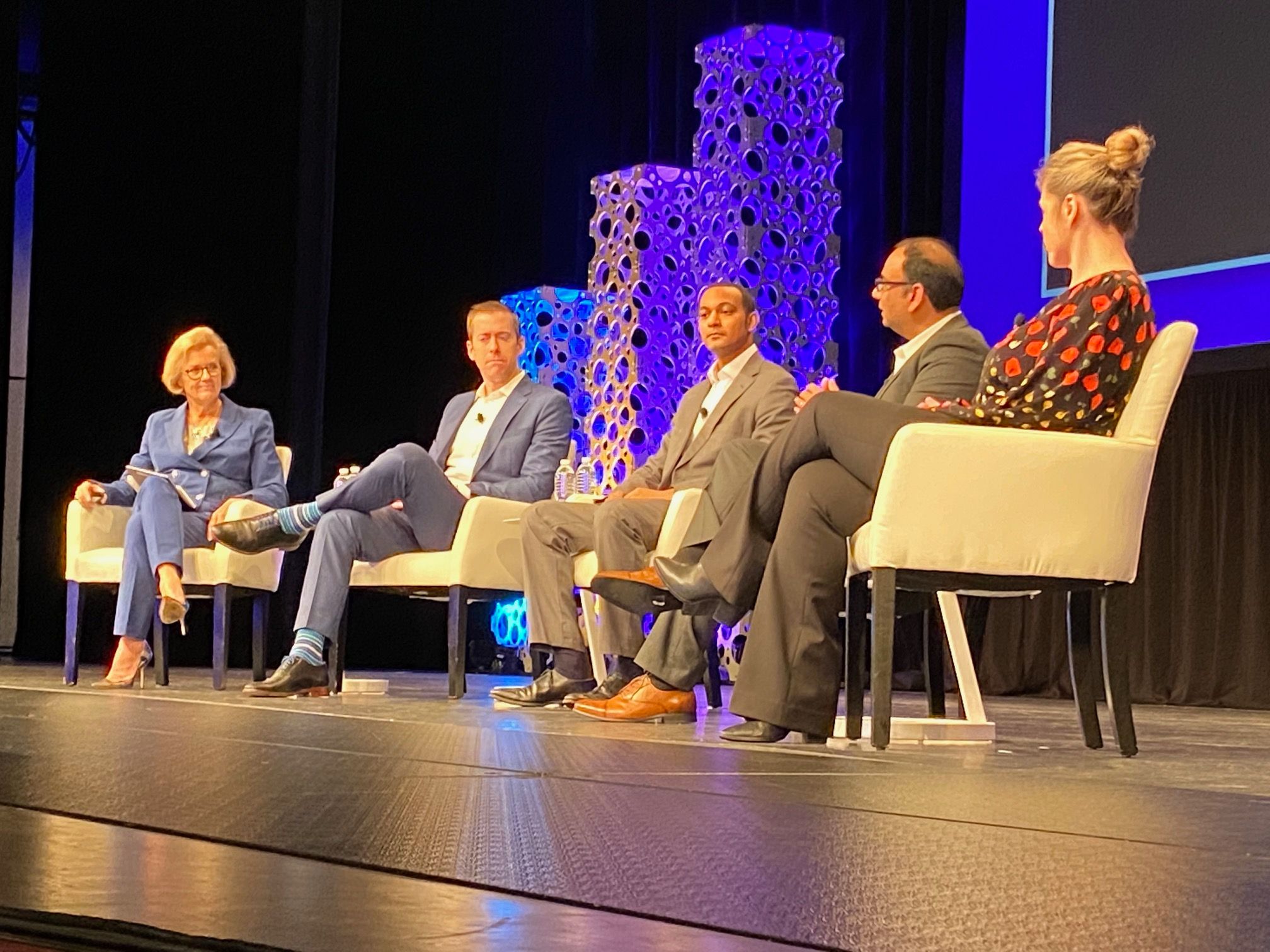HIMSS 2022: Digital transformation of healthcare must gain speed
In an overview of the state of healthcare, leading experts talked about what needs to happen from the perspectives of providers, doctors, patients and payers.
Orlando, Fla. - At a panel on the state of healthcare, experts agreed on one key point about the digital transformation of the industry.
It’s happening too slowly.
There are a host of reasons for it, not the least of which is the COVID-19 pandemic that has had hospitals in crisis mode for two years. At a panel at the HIMSS Global Health Conference & Exhibition Tuesday, experts from various perspectives discussed the challenges and opportunities of accelerating the digital transformation of healthcare.
The panelists offered the perspectives of providers, clinicians, patients and payers. The discussion also included key highlights of the HIMSS State of Healthcare report.
To be clear, the report showed wide-ranging agreement in the need for digital transformation. The vast expansion of telehealth, triggered by the pandemic, illustrated the industry’s ability to pivot.
But the panel discussion revealed candid assessments of what’s impeding progress.
Panelists discuss the digital transformation of the healthcare industry at the HIMSS 2022 Global Health Conference & Exhibition.

Clinicians
Doctors offer a host of obstacles to digital transformation, said Darryl Gibbings-Isaac, a physician and an executive with Accenture’s Health Strategy Practice.
The HIMSS report indicated that around one in three cited a lack of training and communication, and said digital tools aren’t meshing with workflows.
“We need to keep supporting clinicians,” Gibbings-Isaac said.
The State of Healthcare Report shed light on where doctors see promise in digital healthcare. A solid majority of doctors see the value in digital care in ongoing disease management and preventive screenings.
Most doctors say they see value in offering more digital options because they see it leading to greater patient satisfaction.
Gibbings-Isaac some key areas that are vital for the successful digital transformation of healthcare. He urged healthcare executives to “fight the friction” by providing the right training, offer the right incentives (including but not limited to compensation) and make continuous improvements by soliciting and heeding the feedback of clinicians.
Healthcare systems
Thomas Kiesau is a director of with The Chartis Group, which works with healthcare organizations to transform their operations. But he’s frank in the assessments of the industry’s progress.
While the report indicates nearly all providers understand the digital transformation and shift to personalized care is essential, most providers aren’t matching that assessment with action.
About one in five providers (21%) are in the implementing stages for digital transformation, and only 11% of providers are in the implementing stages for personalized care.
“Transformation and personalized care initiatives really aren’t far along,” he said.
Providers need to gain a more consumer-centric focus, Kiesau said. Healthcare organizations need to become good at meeting the needs of customers and not just “healthcare good,” he said.
To be fair, providers have been fighting fires with the pandemic for two years, Kiesau said. As a result of the pandemic, he said, “Health systems are not sitting on piles of cash.”
The key is getting organizations to see the return on investment and to simply begin, and it doesn’t necessarily involve solving every problem immediately. But develop a plan.
“The key is: focus and execute,” he said.
Patients
In recent years, patients are feeling more empowered, said Lauren Goodman, HIMSS’ senior insight director and a marketing expert.
Patients are also decidedly less than enthralled with the care they are getting.
“Less than half think they’re getting good value out of the healthcare system these days,” Goodman said. “That’s a really big deal.”
Patients are also increasingly aware they have options other than going to a doctor or a traditional healthcare organization.
About 1 in 4 patients in the United States said they have received care from a retail clinic. But the number gets bigger as patients get younger. The report found 38% of those in Gen Z and millennials have gone to a retail clinic for their healthcare. So roughly 4 out of 10 people under the age of 40 have used a retail clinic.
Less than a quarter of patients said their healthcare providers personalized care based on current health and unique goals, Goodman said.
Healthcare providers should have plenty of incentive to move to personalized care, she said.
“Those organizations will flourish,” she said. “Otherwise they might become obsolete.”
Payers
Shreesh Tiwari is a principal and leader with the ZS consulting firm, and he works with healthcare payers to develop digital and technology strategies.
Payers see technological and regulatory barriers in driving reimbursement models. But he noted payers have made impressive strides with telehealth. He also said payers are developing or acquiring capabilities to surmount technological barriers.
Payers outside the United States expressed more readiness in accelerating digital and personalized care models, he noted.
Tiwari spoke about the need to create a symbiotic relationship with in-person care and virtual care.
The pandemic has helped spur the move of some healthcare activities outside the hospital, with the growth of home-based programs and remote patient monitoring.
Healthcare systems don’t necessarily see payers as allies, but Tiwari noted that payers can work with providers to help drive solutions to improve care.
Tiwari also pointed out the challenge – and necessity - of moving to whole-person and personalized care.
“My healthcare is extremely personal to me,” he said.
Telehealth faces a looming deadline in Washington | Healthy Bottom Line podcast
February 12th 2025Once again, the clock is ticking on waivers for telemedicine and hospital-at-home programs. Kyle Zebley of the American Telemedicine Association talks about the push on Congress and the White House.
Children’s hospitals face complex challenges dealing with disasters
April 18th 2025Pediatric hospitals deal with different factors in weather-related events and other emergencies. Terri Wilson of the Children’s Hospital Association talks about the challenges and the need for more planning and support.